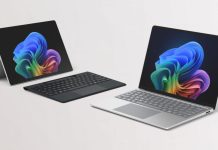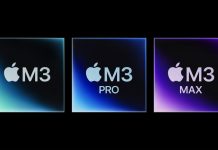
Are Apple Vision Pro users “Glassholes 2.0,” or are they pioneers, forging ahead into a future that challenges conventional boundaries?
The launch of Apple’s Vision Pro has kicked off the spatial computing race with the sale of 160,000 to 180,000 units in its opening weekend. Despite a premium price of $3,499, the headset has predictably captured the attention of early adopters with deep pockets in the US desperate to get their hands on the next big thing. But could this also be the moment where the lines between our digital and physical worlds disappear forever as big tech races to replace the smartphone?
Many question whether this cutting-edge device is a remarkable leap or risks becoming the ultimate surveillance machine. In this era where innovation knows no bounds, the Vision Pro’s potential as a privacy nightmare and dubious use of language cast a shadow over its groundbreaking features and impressive sales figures. Whichever side of the virtual fence you sit on, everyone is talking about mixed reality again.
Spatial computing vs. AR/MR: the language debate
Apple’s decision to label its Vision Pro as a “spatial computer” rather than resorting to conventional terms like augmented reality (AR) or mixed reality (MR) has ignited a language controversy. While this unique terminology underscores the device’s advanced capabilities, concerns about the potential suppression of established terminology have arisen.
Louis Rosenberg, an industry veteran, fears that Apple’s language restrictions may go too far, erasing the rich history associated with terms like AR and MR. He acknowledges the evolving language of immersive tech, where terms like “augmented reality” and “mixed reality” have found their place. It’s important to differentiate between AR and MR, as MR offers a more authentic integration of virtual content with the real world.
The Apple Vision Pro is an MR headset that allows users to blend the real and virtual worlds seamlessly, thanks to its spatially registered interactive content and visionary spatial operating system (vision). In light of these considerations, Rosenberg suggests that Apple should strike a balance between innovation and preservation of established language, allowing apps on the Vision Pro to reference VR, AR, and MR experiences without undue language restrictions.
Immersive technology and human connection: a balancing act
The absence of apps like YouTube, Netflix, and Spotify on the Apple Vision Pro raises valid concerns about its practicality and potential societal impact. Early limited app availability could hinder its adoption among users who rely heavily on these platforms for entertainment and information. The notion of a future where such devices become more common, possibly replacing traditional smartphones, raises dystopian questions about our ability to maintain genuine human connections.
The fear that we may become a society constantly immersed in our virtual worlds, detached from physical reality and unable to make eye contact, is thought-provoking. The apprehension about multitasking with these immersive devices, where everyone may be engrossed in their private digital experiences during conversations, raises valid concerns about the loss of essential human body language and interpersonal communication cues. As we navigate this technological frontier, we must consider and address these potential downsides while striving for a balance that enhances our lives rather than isolating us further from the real world.
Whether your culture reference point is Ready Player One, Rainbows End, Snow Crash, or Black Mirror, most agree that eating at a restaurant with a tech-enhanced pair of ski goggles is not as cool as wearers might like to think. But we can expect more aesthetically pleasing devices, like China’s Xreal AR glasses, as technology progresses and the usual suspects in Big Tech race to become leaders of a new mixed reality for all. For these reasons alone, it’s not just about Apple Vision Pro. It’s the beginning of a new journey that will take us away from our smartphones into something more immersive.
Transform your workflow
Some early adopters are attempting to look beyond the hype and practicality of using the Apple Vision Pro in public settings. The Vision Pro could transform their workflow.
One of the most significant drawbacks of this four thousand-dollar VR headset is the lack of killer apps to bring it all to life. In these early stages, paying nearly four thousand dollars for a single display that you can extend your three thousand-dollar Laptop with feels like a modern-day version of the emperor’s new clothes. But could this be a glimpse into a future mixed reality?
One recurring theme from online commentators is the potential dangers and distractions while wearing the headset. Users express concerns about individuals walking around while immersed in their Apple Vision Pro devices, citing worries about safety and the risk of being targeted by thieves. This raises an essential question about how society balances the convenience of technology with the need for safety and awareness of our surroundings.
Hype and attention
Several comments suggest that people wearing the Apple Vision Pro in public may do so for attention or bragging rights. The novelty factor and the desire to showcase the latest technology can be found in week one of the release, but there’s still time to find out whether this trend is a fad or a long-term shift in behavior.
However, even the most cynical will find parallels between the Apple Vision Pro and previous tech products like early smartphones or the Segway. Some believe that, with time, these devices may become more socially accepted and integrated into daily life. These comparisons highlight the ongoing evolution of technology and the potential for acceptance over time.




